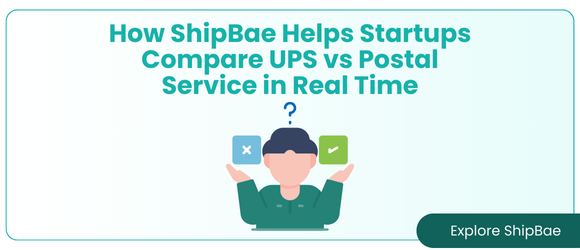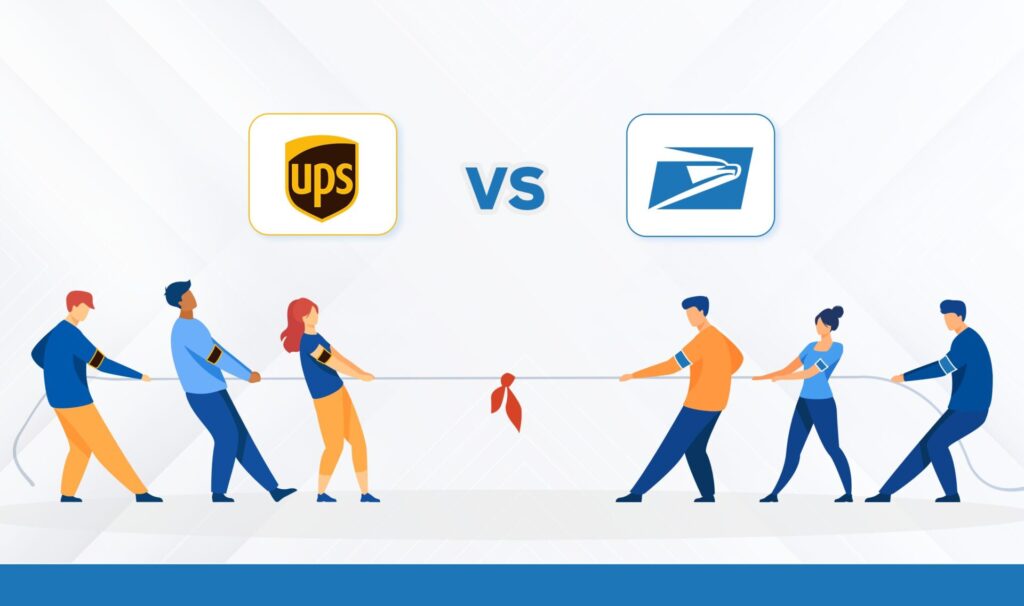The 2010s ushered in a boom in e-commerce and social media, a surge of start-ups that helped redefine the digital economy. According to Statista, the total value of e-commerce start-ups grew from $1 billion to over $10 billion within a few years. There are over 150 million start-ups globally, with the United States leading with 82,000+ ventures.
While the numbers are impressive, the success rate tells a different story: only about 10% of start-ups survive long term. The rest fail, not always because of poor products or ideas but often due to overlooked fundamentals that quietly shape a business's trajectory.
Shipping is one of them.
It's more than just moving boxes – it affects customer experience, cash flow, and brand credibility. Yet many e-commerce founders invest heavily in branding, marketing, and product design while underestimating the impact of a scalable, efficient shipping strategy.
Whether fulfilling your first order or preparing for a significant product launch, this guide will helps you make smarter decisions about shipping carriers and tools to support long-term growth.
What is a Start-up?
A start-up is a new business created to solve a specific market problem, often through innovation. These ventures typically face high initial costs, low early revenue, and rely on external funding to grow.
Start-ups take time to become profitable and often involve significant risk. However, their growth has been rapid in the e-commerce sector.. Over 13,480 e-commerce start-ups exist globally; the industry expands at 10.14% annually.
This rise isn't random. As Sweid notes, most successful start-ups begin by identifying market gaps and building structured solutions,proving that thoughtful strategy not spontaneity, drives long-term success.
This foundation makes operational choices, like your shipping strategy, critical.
Why Shipping Matters from the Beginning?
For startups, every customer interaction is crucial. A delayed delivery or high shipping cost can quickly turn an interested buyer into a lost sale. Even worse, it can result in negative reviews that are difficult to overcome, expecially when your brand is still gaining traction. To remain competitive and maintain customer loyalty, , businesses must consistently meet rising customer demands.
Beyond customer satisfaction, shipping is also a significant cost center. If not managed carefully, expenses can quickly eat into already-thin margins. Choosing the right carrier, negotiating better rates, and streamlining fulfillment are all essential to staying lead and competitive.
Where Startups Go Wrong: Common Shipping Pitfalls
Understanding the mistakes other have made can be more valuable than studying success alone. Below are real-world examples of eCommerce startups that struggled – or failed – due in part to poor shipping strategies, from choosing the wrong carriers to scaling fulfillment too quickly. These stories offer valuable lessons for any growing business.
1. Shyp (2013 – 2018)
What they did: On-demand pickup, packaging, and shipping by courrier, billed at a flat rate.
Pitfalls:
- Unsustainable unit economics: Flat fees didn't cover the costs of packaging materials, warehouse space, driver labor, and carrier rates, especially when volumes were low or unpredictable.
- Overexpansion: They scaled into multiple cities before finding a stable, repeat-customer base, then had to pull back to core markets.
- Lesson: Without accurately modeling all fulfillment costs ( pick-up, packaging, labor, carrier rates ) and locking in volume discounts, you can burn through cash fast.
2. ToyGaroo (2010-2012)
What they did: "Netflix for toys" subscription rentals —ship out toy packages, then receive returns, clean and re‑ship.
Pitfalls:
- Inventory & return logistics: High costs to warehouse, inspect, and repackage used toys at scale.
- Carrier costs spiking: As membership grew, shipping expenses ballooned without corresponding price increases or negotiated rates.
- Lesson: A model built on recurring shipments/returns multiplies your carrier costs, and if you don't factor in dimensional weight or negotiate with carriers, shipping eats your margin.
3. Webvan (1996-2001)
What they did: Ultra-fast online grocery delivery with dedicated warehouses and their own fleet.
Pitfalls:
- Massive up-front infrastructure: Building huge temperature-controlled warehouses and fleets before proving unit economics.
- Delivery delays & poor retention: Customers lured by convenience often balked at service hiccups or extra fees.
- Lesson: Premium promise (30-minute windows) without streamlined carrier partnerships or flexible scaling leads to crushing fixed costs.
4. Torquing/ Zano (2015 Kickstarter→ collapse)
What they did: Crowdfunded nano-drones—included shipping hundreds of units worldwide.
Pitfalls:
- Under-estimating global shipping complexity: Customs, lost/damaged packages, variable rates for small electronics.
- Failure to deliver: Only a handful of backers got the product: logistics chaos undermined credibility.
- Lesson: Even relatively small, high-value items carry unexpected logistical hurdles; you must rigorously plan your end-to-end shipping, returns, and customer communication.
Key Takeaways
- Model every dollar of fulfillment—from pick‑up through final‑mile delivery and returns.
- Negotiate carrier rates early or leverage multi-carrier platforms to avoid spikes.
- Scale incrementally: Prove your processes in one region before expanding nationally.
- Invest in reliable tracking & customer communication to manage expectations and reduce churn.
By studying these cautionary tales — Shyp's cost overruns, ToyGaroo's return-logistics burden, Webvan's fixed-cost overload, and Zano's delivery breakdown-you'll see precisely how shipping miscalculations can sink even well-funded ventures. Use these lessons to build a nimble, data-driven fulfillment strategy that grows with you, not against you.
UPS vs Postal Service: Which Works Best for Startups?
Two of the most accessible carriers for startups in North America are UPS and the United States Postal Service (USPS). Each offers advantages depending on your specific needs.
| Feature | UPS for Startups | USPS for Startups |
| Best Use Case | High-value, branded, or heavier product shipments | Lightweight items, subscription boxes, or small-scale product launches |
| Cost Efficiency | More expensive, especially for small/lightweight packages | More affordable for packages under 1 lb |
| Delivery Coverage | Strong delivery network, but limited access to P.O boxes and some rural areas | Delivers to P.O. boxes and remote/rural areas |
| Tracking & Reliability | Offers detailed tracking and consistent delivery times | Basic tracking with variable delivery times |
| Saturday Delivery | Available but may cost extra | Included for free |
| Insurance & Claims | Better support for insurance and damage claims | Limited insurance, slower claims process |
| Branding & Presentation | Offers more professional and premium shipping options | More basic packaging and shipping experience |
Here's a quick tip: Many thriving startups use a hybrid shipping strategy—USPS for lightweight, budget-friendly orders and UPS for larger, high-value shipments. Combining both carriers helps balance costs, improve delivery reliability, and scale more efficiently. Want to dive deeper? Check out this detailed guide.
Why Startups Need Flexibility in Fulfillment (Beyond UPS vs Postal Service)
As a startup, your shipping needs are likely yo evolve rapidly. You might be testing new markets, fine-tuning your packaging, or focusing on regional rollouts before scaling. That's why flexibility is critical-being tied to long-term contracts or rigid minimums can limit your agility and drive up costs.
- What happens if shipping rates rise unexpectedly?
- What if a product gains traction and you need to fulfill orders nationwide?
- What if customers begin expecting faster turnaround times?
Early-stage businesses thrive with shipping setups that can adapt on the fly. Tools that let you easily compare carriers, like UPS and USPS and adjust strategies without added penalties can be a real advantage. Understanding how each provider structures their pricing and services helps you make smart, cost-effective decisions that scale with your business. Choosing the right option isn't just about saving money—it’s about staying responsive to your customers and growth.

How ShipBae Helps Startups Compare UPS vs Postal Service in Real Time
This is where the Gori Company's ShipBae comes in. Designed for small businesses and startups, ShipBae gives you access to enterprise-level shipping tools without the complexity or cost.
Here's how it helps:
- Deep Discounts: Even without high volume, you can access up to 89% off USPS and 82% off UPS daily rates.
- No Monthly Fees: Only pay when you ship. No subscription. No long-term commitment.
- Compare Carriers Instantly: Choose the best rate and delivery option across USPS, UPS, and FedEx.
- Simple Interface: Manage orders, print labels, and track shipments in one dashboard.
- Scalable for Growth: Whether you're shipping 5 or 500 packages a month. ShipBae grows with your business.
Startups often lack the negotiation power of big brands. ShipBae levels The playing field, especially when comparing UPS vs the Postal Service on a shipment-by-shipment basis.
Ship Smarter, Scale Faster
Shipping may seem like a backend detail, but for startups, it's a core part of their customer experience and profitability. As the case studies show, even well-funded companies can stumble when logistics are miscalculated or overly rigid. The right shipping strategy—flexible, scalable, and cost-conscious—can be the difference between gaining traction and falling behind.
That's why tools like ShipBae are essential for today's founders. You need more than just access to carriers-you need the ability to adapt, compare rates in real time, and ship without overcommitting to costly systems or contracts. Whether you're choosing between UPS or USPS or planning your next product launch, ShipBae puts smart, start-up friendly logistics at your fingertips.
Ready to simplify your shipping and save more on every package? Start using ShipBae today—there are no fees, no lock-ins, just smarter shipping built for startups.



